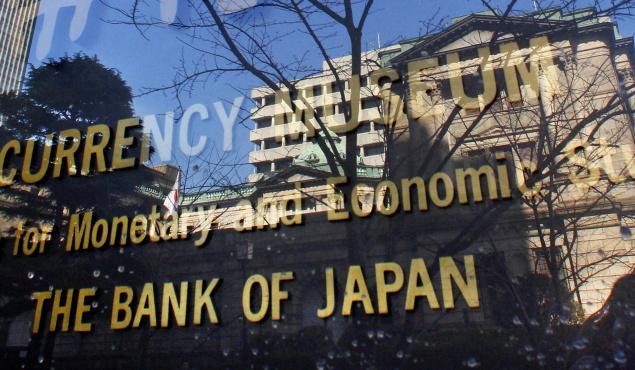
The Bank of Japan will charge lenders that leave too much cash on idle deposit with it, introducing a negative interest rate policy for the first time as it seeks to shore up a stumbling economic recovery.
The surprise move rattled stock market investors, with the Nikkei 225 index swinging between gains and losses after the announcement. It closed 2.8 percent higher. The Japanese yen slid, with the U.S. dollar rising to about 120.70 yen from about 118.50 earlier in the day.
Negative Interest on deposits
The central bank said it is imposing a 0.1 percent fee on some new commercial bank deposits with the BOJ, effectively a negative interest rate. It hopes that will encourage commercial banks to lend more, rather than keeping cash at the BOJ, and stimulate investment and growth in the world’s thirdâ��largest economy.
Bank deposits with the BOJ will be divided into three tiers. Existing current account balances will earn a 0.1 percent positive interest rate. Required reserves held at the central bank by financial institutions will earn zero interest. Any additional current account deposits would incur the minus 0.1 percent rate.
The bank will cut the interest rate further into negative territory if judged as necessary.
The policy would continue as long as needed to achieve its inflation target. In the meantime, the BOJ pushed back its timeframe for achieving that goal from late 2016 to mid�2017.
Background of Negative Interest
The European Central Bank has already imposed negative interest rates, after leaving interest rates near zero failed to entice banks into seeking higher returns through lending
.In Japan, keeping interest rates near zero has likewise failed to yield the desired results, raising doubts about the credibility of the quantitative and qualitative monetary easing policies announced by BOJ Gov. Haruhiko Kuroda in April, 2013.
Data showed Japan’s core inflation rate for 2015, excluding volatile food prices, at 0.5 percent.
Consumer spending fell 4.4 percent in December from a year earlier, as households chose to save rather than splurge on any gains from the low oil prices that are slowing inflation. It was the fourth straight month of year-on-year declines.
Industrial output fell 1.6 percent in December from a year earlier, partly due to slower demand for machinery and electronics components and devices in China.
The central bank said it would also persist with its “quantitative easing” purchases of about 80 trillion yen (about $660 billion) of government bonds a year.
Average incomes Fall
Average incomes fell 2.9 percent from a year earlier in December. Even though unemployment was steady at 3.3 percent and the job market remained tight, companies wary over the economic outlook are opting not to raise pay.
Some economists contend that the “Abenomics” focus on inflation as a spur to growth is misplaced. Pushing the banks to lend will only work if companies borrow and invest.
Current Affairs: 29th January, 2016 Current Affairs Round up December, 2015.

Join The Discussion